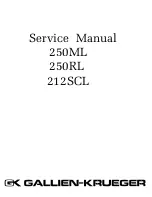
40
CVP-701 Reference Manual
Song Pla
y
bac
k
– Pla
y
ing and P
racticing Songs –
4
When playing back a Song and a Style at the same time, channels 9-16 in the Song data are replaced with
Style channels – allowing you to play the accompaniment parts of the Song yourself. Try playing chords
along with the Song playback as shown in the instructions below. When playing back a Song and a Style at
the same time, we recommend that you use the Preset Songs in the “Sing-a-long” folder.
1
Select a Song.
2
Select a Style.
3
Press the STYLE [ACMP ON/OFF] button to turn on the
Auto Accompaniment function.
4
Press the STYLE [SYNC START] button to enable standby
— letting you simultaneously start the accompaniment
as soon as you start playing.
5
While holding down the SONG CONTROL [STOP] button,
press the [PLAY/PAUSE] button to enable synchronized
start for the Song.
6
Press the STYLE [START/STOP] button or play chords with your left hand.
The Song and Style starts playing. When you play chords, pressing the [SCORE] button and turning
CHORD on (
) allows you to see the chord information.
NOTE
When playing back a Song and a Style at the same time, the tempo value set in the Song is automatically used.
When Song playback is stopped, the Style playback is also stopped at the same time.
[6
]
NOTE NAME
Selects the type of the note name indicated at the left of the note in the notation
from among the following three types. The settings here are available when the
NOTE ON/OFF parameter above is set to ON.
A, B, C
Note names are indicated as letters (C, D, E, F, G, A, B).
Fixed DO
Note names are indicated in solfeggio and differ depending on the selected
language.
Movable DO
Note names are indicated in solfeggio according to the scale intervals, and as
such are relative to the key. The root note is indicated as Do. For example, in the
key of G major the root note of “Sol” would be indicated as “Do.” As with
“Fixed Do,” the indication differs depending on the selected language.
Using the Auto Accompaniment Features with Song Playback
















































